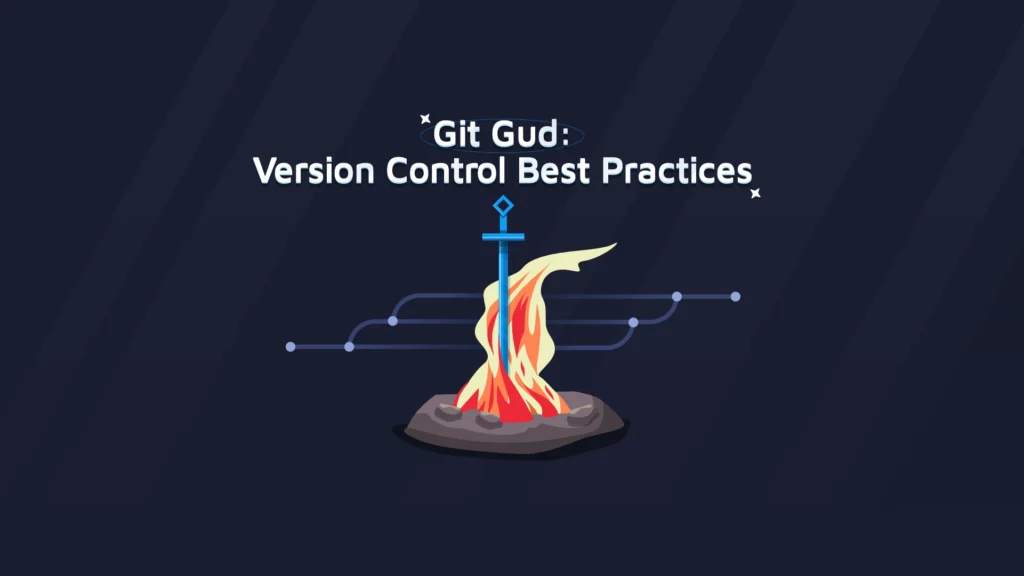Git is one of the most popular version control systems used in modern software development. It allows multiple developers to collaborate on a project efficiently, track changes, and maintain a complete history of the project. However, simply using Git is not enough—using it effectively requires following certain best practices to ensure smooth collaboration, avoid conflicts, and maintain a clean codebase.
In this blog post, we’ll cover essential best practices for using Git in your development workflow, helping you maintain an organized project while maximizing productivity.
Why Version Control is Important
Version control helps in tracking every change made to the codebase, allowing developers to:
- Roll back to previous versions if something goes wrong.
- Keep track of who made changes and when.
- Enable multiple developers to work on the same project simultaneously.
- Ensure smooth integration of new features, bug fixes, and other modifications.
Now, let’s dive into the best practices for using Git.
1. Make Small, Frequent Commits
One of the fundamental rules of using Git is to commit small, self-contained changes rather than large, complex ones. Each commit should represent a single change, like a bug fix or a feature addition. This way, it becomes easier to review the commit history and isolate issues if something goes wrong.
Benefits:
- Simplifies debugging by isolating specific changes.
- Provides better context for each modification.
- Easier to roll back individual changes without affecting unrelated code.
Example:
# After making a small, isolated change
git add .
git commit -m "Fix issue with login validation"2. Write Descriptive Commit Messages
Clear and concise commit messages make it easier to understand the history of your project. A good commit message should explain why the change was made, not just what was changed.
Best practice format:
- Subject Line: Short, imperative sentence summarizing the change (e.g., “Fix broken user authentication”).
- Body (optional): Explain why the change was necessary, what it does, and how it was implemented.
Example:
git commit -m "Add error handling for invalid user inputs on registration form"3. Use Branching Effectively
Branching is a powerful feature in Git that allows you to create isolated environments for specific tasks, such as new features or bug fixes. Always create a new branch before starting on a task rather than working directly on the main branch.
Branching Strategy:
- Main (or Master) Branch: Contains production-ready code.
- Develop Branch: Contains code that is still under development but is mostly stable.
- Feature Branches: Branches created for specific tasks or features (e.g.,
feature/login-form).
Commands:
# Create and switch to a new feature branch
git checkout -b feature/login-formThis practice keeps the main branch clean and stable while allowing you to work on multiple features or bug fixes simultaneously.
4. Use Pull Requests for Code Reviews
Before merging any changes into the main branch, always create a pull request (PR). PRs allow other team members to review the code and provide feedback. This practice helps ensure that the code is bug-free, adheres to coding standards, and is well-documented.
Key Tips for Pull Requests:
- Keep PRs small and focused.
- Request reviews from multiple team members.
- Include a detailed description of the changes in the PR.
5. Rebase Instead of Merging (When Appropriate)
While merging is the default way to integrate branches in Git, using rebase can create a cleaner, linear history. When you rebase, you apply your changes on top of the existing commits rather than creating a new merge commit. This technique can be particularly useful for keeping the commit history clear and easy to follow.
Example:
# Rebase the feature branch onto the main branch
git checkout feature/login-form
git rebase mainNote: Avoid rebasing shared branches to prevent conflicts with other developers’ work.
6. Avoid Committing Sensitive Information
Never commit sensitive information like API keys, passwords, or credentials to your repository. Once committed, this information becomes part of the Git history and is difficult to remove.
Best Practice:
- Use environment variables to store sensitive data.
- Add these files (like
.env) to your.gitignorefile to prevent accidental commits.
7. Use .gitignore Properly
The .gitignore file specifies which files and directories Git should ignore. This is useful for excluding files that don’t belong in the repository, such as compiled code, log files, or sensitive information.
Common Files to Exclude:
- Configuration files (e.g.,
.env) - Build artifacts (e.g.,
/dist,/node_modules) - OS-specific files (e.g.,
.DS_Store)
Example:
# Add this to your .gitignore file
node_modules/
.env
*.log8. Keep Your Branches Clean
Once a branch has been merged into the main branch, delete it. Keeping old, unused branches clutters the repository and makes it difficult to manage the project.
Command:
# Delete a branch locally
git branch -d feature/login-form
# Delete a branch on the remote repository
git push origin --delete feature/login-form9. Use Tags for Releases
Git allows you to mark specific points in your project’s history as “releases” by using tags. Tags are often used to mark release versions, making it easier to track and reference significant points in the project’s lifecycle.
Command:
# Create a tag for version 1.0.0
git tag v1.0.0
git push origin v1.0.0Tags are useful when you need to roll back to a specific version of the software.
10. Backup Your Work Regularly
Though Git stores the complete history of your project locally, it’s essential to push your changes to a remote repository regularly. Remote repositories like GitHub or GitLab act as backups, allowing you to access your code from different locations and preventing data loss in case of local system failures.
Command:
# Push local changes to the remote repository
git push origin feature/login-formConclusion
Version control is the backbone of modern software development, and Git offers the flexibility and power to manage even the most complex projects. By following these best practices, you can ensure that your code remains clean, your team works efficiently, and your project history is easy to navigate.
At Techstertech.com, we follow these best practices for version control to ensure high-quality, maintainable code. Whether you’re a beginner or an experienced developer, adhering to these principles will help you work more effectively with Git.



